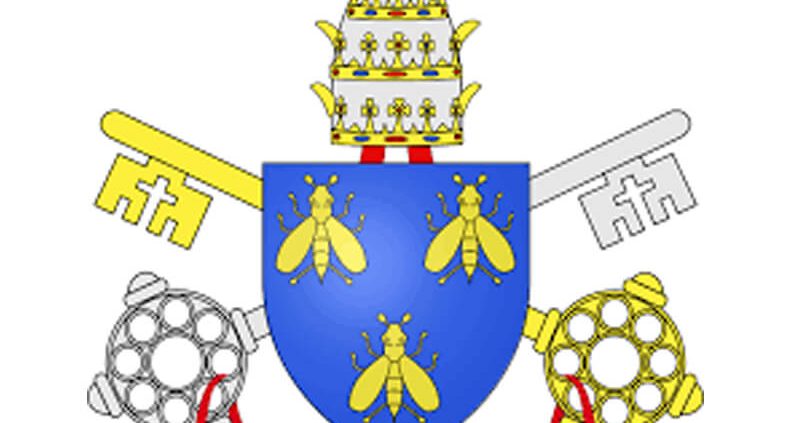Symbolism of the image of bees
Since ancient times, images of bees, especially honey bees, have symbolised industry and have been associated with divine messages about fertility and the soul. Like honey, olive branches and the dove have other symbolisms and meanings. Therefore, it is a sign of how bees have been living with us for centuries. We are also going to see how this symbol of the image of a bee, a beehive and its honey has been used in industry, in religions and for other purposes.
Index:
|
Abstract: The symbol of bees, their hives and honey have been used since ancient times. Especially the bee has a meaning that comes from heaven according to some religions.
Related articles: Where to buy quality raw honey?
1. Symbolism of the bee image
We are going to make a small summary of the different cultures that have used the image of the bee with different symbolisms. Among them, we have the following:
a) The industry sector and in the work ethic of companies.
There are many examples of how bees have been associated with hard work and teamwork. Examples at least in the English language such as “busy as a bee”. We will also give some examples of this:
- The English city of Manchester has for many years used the honeybee as a symbol of its hard-working workforce and industry. At the beginning of the industrial revolution, England and Manchester were producers of cotton textiles. At this time, many towns and buildings have been associated with images of honey bees. These images can be seen on their entrances, meeting rooms and clocks.
- One of the most famous colleges in Oxford in the UK, the President and Scholars of the College of Corpus Christi, uses animals as a symbol of their college. Exactly, it has bees, pelicans and foxes as symbols of its college. Moreover, its founder insisted on using the phrase “assets like a hive of bees”.
b) Association with fertility
In the Hindu religion, the Rig Veda, a text of the Vedic culture, indicates how he created spring from one of his footsteps. From the spring came mead, which bestowed fertility on those who drank it.
c) Bees in ancient Greece
The ancient Greeks revered bees. They also appear with great frequency in Greek mythology.
- It is said that when the philosopher Plato was in his cradle, a hive of bees swarmed in his mouth.
- The ancient Greek poet, Pindar, was also said to have been fed by the bees themselves as a substitute for milk.
- The Greeks consecrated bees to the moon.
- In ancient Greece, the goddess Artemis was fed by the bee goddess. Furthermore, connected with the use of honey in rituals as well as food of divine origin.
- The Greek philosopher Pythagoras believed that the souls of the wise and ingenious passed into the bodies of bees.
d) Bees in the Roman Empire
The Romans of the ancient Roman Empire also revered honey and bees. Among the anecdotes that stand out is the following:
- Jupiter was for the ancient Romans a god equivalent to Zeus for the Greeks. According to their mythology, this pagan god was fed by the bees themselves.
e) The soul and divine messages
It is very interesting how in some ancient cultures and traditions bees have been associated with divine messages, the soul and the sky. Examples are the following:
- The Celts and the Saxon people believed that bees were messengers connecting the two worlds, the earthly and the spiritual.
- The Egyptians thought that the bee represented the ka, i.e. the soul for them.
- In the folklore of some regions of Europe it was believed that bees and eagles were the only animals that had access to heaven.
- According to Egyptian mythology, when their god Re cried, his tears transformed into bees once they touched the earth. The latter delivered messages to men.
2. Bees and Christianity
In Christianity there are many anecdotes about bees and honey. Among them, the most outstanding are the following:
- St. Ambrose of Milan (340-370 AD) was an archbishop of Milan and was one of the most influential figures of the 4th century in the church. There is a legend that when he was an infant a hive of bees was placed in his cradle, dropping a drop of honey on him. Consequently, his father considered this a sign of good prodigy. For this reason, bees and bee hives appear frequently in the saint’s symbolism.
- In 1623, a swarm of bees flew over the Vatican during a conclave where a new pope was being elected. The bees landed in the chamber where Mafffeo Barberini waited to be elected. Consequently, Maffeo was elected pope. After the election of this pope, it was said by the Romans that the pope was predicted by a swarm of bees. For this reason, on some monuments in the Vatican we find three bees.
- Likewise, bees appear several times in the Bible.
3. Bees in the Qur’an and Judaism.
This manuscript indicates various characteristics of bees and also receives instructions from heaven. Moreover, bees are mentioned several times in the Torah. In addition, Jews frequently use honey in their religious customs such as Rosh Hashanah.
In short, as can be seen the image of bees has had and continues to have great symbolism.
Source:






Leave a Reply
Want to join the discussion?Feel free to contribute!